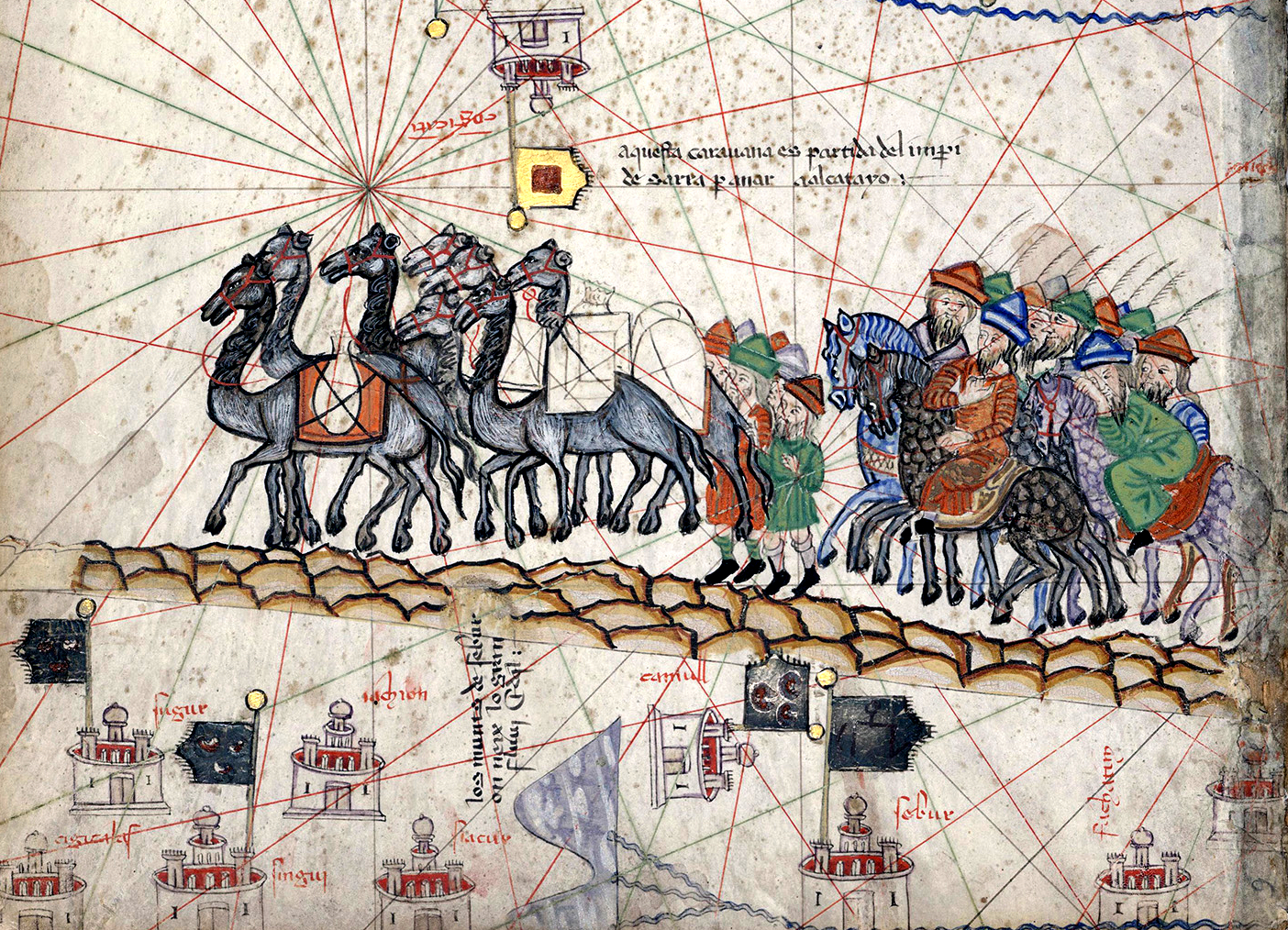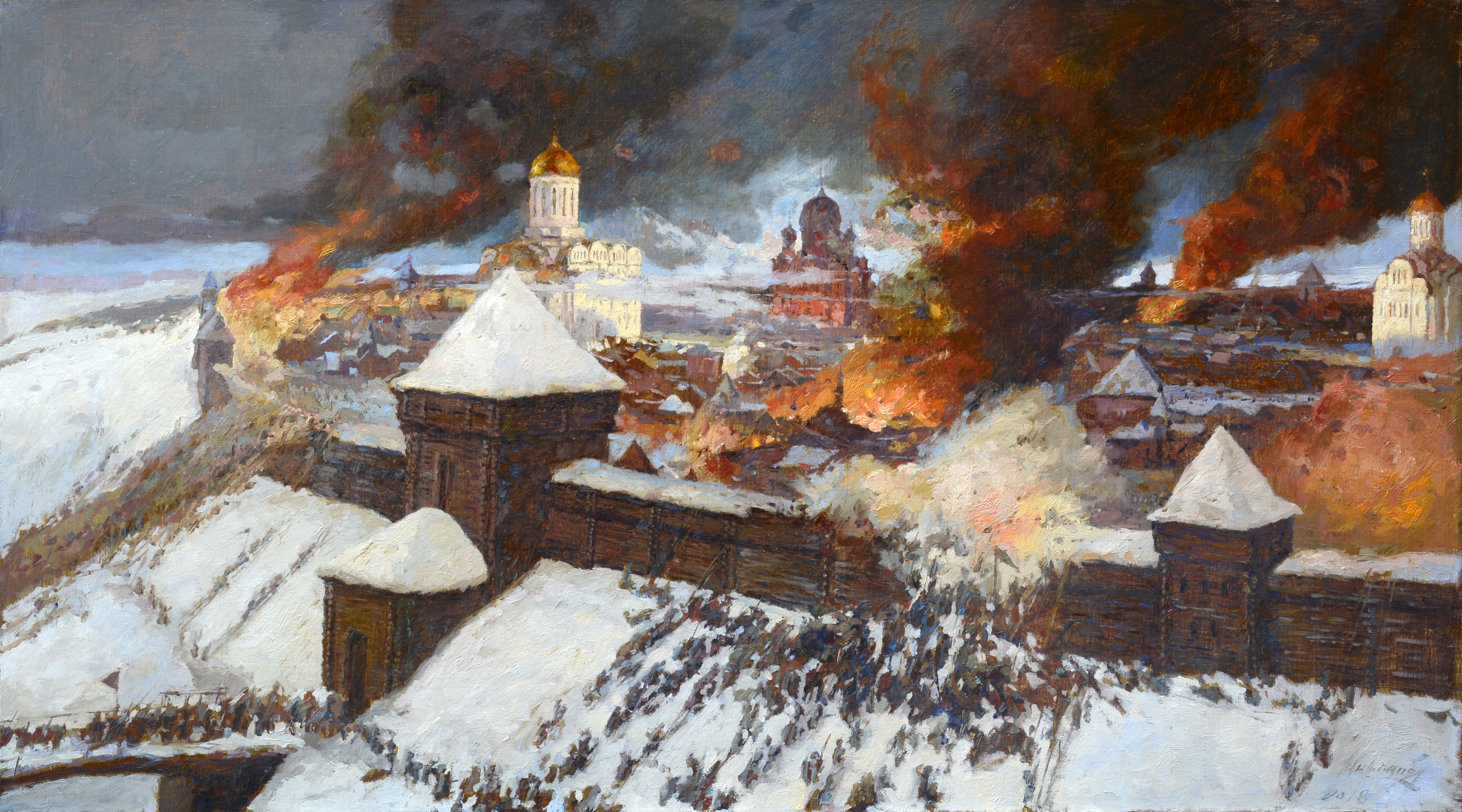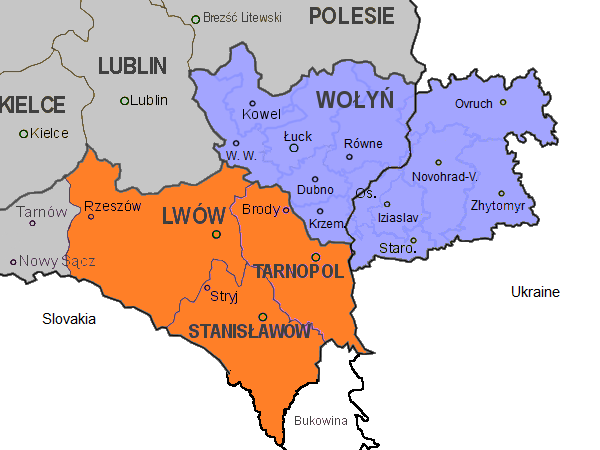|
Duchy Of Belz
Duchy of Belz or Principality of Belz was a duchy, formed in the late 12th century in Kievan Rus. During its history the duchy was a constituent part of some other political entities such as the Kingdom of Rus, the Kingdom of Hungary, Duchy of Masovia when eventually in the late 14th century was incorporated into Kingdom of Poland (1025–1385), Poland becoming later the Bełz Voivodeship. History The duchy formed in 1170 because of the feudal fragmentation of Kievan Rus'. ''Bełskie księstwo'' entry in ''S. Orgelbranda encyklopedja powszechna'', Volume 2, Wydawn. Towarzystwa Akcyjnego odlewni czcionek i drukarni S. Orgelbranda synów, 1898Google Print, p.298-299(public domain) Grzegorz Rąkowski, ''Przewodnik krajoznawczo-historyczny po Ukrainie Zachodniej: Ziemia lwowska'', Oficyna Wydawnicza "Rewasz", 2007, Google Print, p.172-174/ref> The Volhynia region, centered ont Volodymyr (city), Volodymyr, was passed to Mstislav II of Kiev (died 1170), who later split it between his so ... [...More Info...] [...Related Items...] OR: [Wikipedia] [Google] [Baidu] |
Kingdom Of Galicia–Volhynia
The Principality or, from 1253, Kingdom of Galicia–Volhynia, also known as the Kingdom of Ruthenia, Kingdom of Rus', or Kingdom of Russia, also Halych–Volhynian Kingdom was a medieval state in Eastern Europe which existed from 1199 to 1349. Its territory was predominantly located in modern-day Ukraine, with parts in Belarus, Poland, Moldova, and Lithuania. Along with Novgorod Republic, Novgorod and Vladimir-Suzdal, it was one of the three most important powers to emerge from the collapse of Kievan Rus'. Roman the Great united the principalities of Principality of Galicia, Galicia and Principality of Volhynia, Volhynia at the turn of the 13th century. Following the destruction wreaked by the Mongol invasion of Kievan Rus' (1239–1241), Prince Daniel of Galicia and the other princes of Rus' pledged allegiance to Batu Khan of the Golden Horde in 1246. The Polish conquest of the kingdom in 1349 led to it being fully absorbed by Catholic Poland.Michael B. Zdan – The Dependence o ... [...More Info...] [...Related Items...] OR: [Wikipedia] [Google] [Baidu] |
Kievan Rus'
Kievan Rus', also known as Kyivan Rus,. * was the first East Slavs, East Slavic state and later an amalgam of principalities in Eastern Europe from the late 9th to the mid-13th century.John Channon & Robert Hudson, ''Penguin Historical Atlas of Russia'' (Penguin, 1995), p.14–16. Encompassing a variety of polities and peoples, including East Slavs, East Slavic, Norsemen, Norse, and Finnic peoples, Finnic, it was ruled by the Rurik dynasty, founded by the Varangians, Varangian prince Rurik.Kievan Rus , Encyclopædia Britannica Online. The name was coined by Russian historians in the 19th century to describe the period when Kiev was preeminent. At its greatest extent in the mid-11th century, Kievan Rus' stretched from the White Sea in the north to the Black Sea in the south and from the River source, headwaters of the ... [...More Info...] [...Related Items...] OR: [Wikipedia] [Google] [Baidu] |
Pax Mongolica
The Pax Mongolica (Latin for "Mongol Peace"), less often known as Pax Tatarica ("Tatar Peace"), is a historiographical term modeled after the original phrase '' Pax Romana'' which describes the stabilizing effects of the conquests of the Mongol Empire on the social, cultural and economic life of the inhabitants of the vast Eurasian territory that the Mongols conquered in the 13th and 14th centuries. The term is used to describe the eased communication and commerce that the unified administration helped to create and the period of relative peace that followed the Mongols' vast and violent conquests. The conquests of Genghis Khan (r. 1206–1227) and his successors, spanning from Southeast Asia to Eastern Europe, effectively took over the Eastern world with the Western world. The Silk Road, connecting trade centres across Asia and Europe, came under the sole rule of the Mongol Empire. It was commonly said that "a maiden bearing a nugget of gold on her head could wander safely th ... [...More Info...] [...Related Items...] OR: [Wikipedia] [Google] [Baidu] |
Mongol Empire
The Mongol Empire was the List of largest empires, largest contiguous empire in human history, history. Originating in present-day Mongolia in East Asia, the Mongol Empire at its height stretched from the Sea of Japan to parts of Eastern Europe, extending northward into parts of the Arctic; eastward and southward into parts of the Indian subcontinent, mounting invasions of Southeast Asia, and conquering the Iranian plateau; and reaching westward as far as the Levant and the Carpathian Mountains. The Mongol Empire emerged from the unification of several nomad, nomadic tribes in the Mongol heartland under the leadership of Temüjin, known by the title of Genghis Khan (–1227), whom a council proclaimed as the ruler of all Mongols in 1206. The empire grew rapidly under his rule and that of his descendants, who sent out Mongol invasions, invading armies in every direction. The vast transcontinental empire connected the Eastern world, East with the Western world, West, and the Pac ... [...More Info...] [...Related Items...] OR: [Wikipedia] [Google] [Baidu] |
Suzerainty
A suzerain (, from Old French "above" + "supreme, chief") is a person, state (polity)">state or polity who has supremacy and dominant influence over the foreign policy">polity.html" ;"title="state (polity)">state or polity">state (polity)">state or polity who has supremacy and dominant influence over the foreign policy and economic relations of another subordinate party or polity, but allows internal autonomy to that subordinate. Where the subordinate polity is called a vassal, vassal state or tributary state, the dominant party is called the suzerain. The rights and obligations of a vassal are called ''vassalage'', and the rights and obligations of a suzerain are called suzerainty. Suzerainty differs from sovereignty in that the dominant power does not exercise centralized governance over the vassals, allowing tributary states to be technically self-ruling but enjoy only limited independence. Although the situation has existed in a number of historical empires, it is con ... [...More Info...] [...Related Items...] OR: [Wikipedia] [Google] [Baidu] |
Mongol Invasion Of Rus'
The Mongol Empire invaded and conquered much of Kievan Rus' in the mid-13th century, sacking numerous cities such as Principality of Ryazan, Ryazan, Principality of Yaroslavl, Yaroslavl, Principality of Pereyaslavl, Pereyaslavl and Vladimir-Suzdal, Vladimir, including the largest: Grand Principality of Kiev, Kiev (50,000 inhabitants) and Principality of Chernigov, Chernigov (30,000 inhabitants). The Siege of Kiev (1240), siege of Kiev in 1240 by the Mongols is generally held to mark the end of the state of Kievan Rus', which had already been undergoing Feudal fragmentation, fragmentation. Many other principalities and urban centres in the northwest and southwest escaped complete destruction or suffered little to no damage from the Mongol invasion, including Kingdom of Galicia–Volhynia, Galicia–Volhynia, Pskov Land, Pskov, Principality of Smolensk, Smolensk, Principality of Polotsk, Polotsk, Principality of Vitebsk, Vitebsk, and probably Vladimir-Suzdal, Rostov and Uglic ... [...More Info...] [...Related Items...] OR: [Wikipedia] [Google] [Baidu] |
Mongols
Mongols are an East Asian ethnic group native to Mongolia, China ( Inner Mongolia and other 11 autonomous territories), as well as the republics of Buryatia and Kalmykia in Russia. The Mongols are the principal member of the large family of Mongolic peoples. The Oirats and the Buryats are classified either as distinct ethno-linguistic groups or as subgroups of Mongols. The Mongols are bound together by a common heritage and ethnic identity, descending from the Proto-Mongols. Their indigenous dialects are collectively known as the Mongolian language. The contiguous geographical area in which the Mongols primarily live is referred to as the Mongol heartland, especially in discussions of the Mongols' history under the Mongol Empire. Definition Broadly defined, the term includes the Mongols proper (also known as the Khalkha Mongols), Buryats, Oirats, the Kalmyks and the Southern Mongols. The latter comprises the Abaga Mongols, Abaganar, Aohans, Arkhorchin, Asud, ... [...More Info...] [...Related Items...] OR: [Wikipedia] [Google] [Baidu] |
Daniel Of Galicia
Daniel Romanovich (1201–1264) was Prince of Galicia (1205–1207; 1211–1212; 1230–1232; 1233–1234; 1238–1264), Prince of Volhynia, Volhynia (1205–1208; 1215–1238), Grand Prince of Kiev (1240), and King of Ruthenia (1253–1264). Biography Early life and reign Daniel's father, Roman the Great, Roman Mstislavich, united the principalities of Principality of Halych, Galicia and Principality of Volhynia, Volhynia in 1199. After his death in 1205, the boyars of Galicia forced the four-year-old Daniel into exile with his mother Anna-Euphrosyne and brother Vasylko Romanovich. After the boyars proclaimed one of their own as prince, the Poles and Hungarians invaded the principality, ostensibly to support the claims of young Daniel and Vasylko, and divided it between themselves. In 1219, Danylo renounced his claims to Galicia (eastern Europe), Galicia in favor of his father-in-law, Mstislav the Bold. In 1221, Daniel re-established his rule over Volhynia, where the boyars a ... [...More Info...] [...Related Items...] OR: [Wikipedia] [Google] [Baidu] |
Roman The Great
Roman Mstislavich ( – 19 June 1205), also known as Roman the Great, was Prince of Novgorod (1168–1170), Volhynia (1170–1189; 1189–1205), and Galicia (1189; 1198/99–1205). He founded the ''Romanovichi'' branch of Rurikids, which would rule Galicia–Volhynia until 1340. By seizing the throne of Galicia, he dominated the western regions of Kievan Rus'. In the early 13th century, Byzantine chroniclers applied the imperial title of '' autocrate'' (αύτοκράτωρ) to him, but there is no evidence that he assumed it officially. He waged two successful campaigns against the Cumans, from which he returned with many rescued captives. The effect of Roman's victory was, however, undermined by new divisions among the princes of Rus'. Roman was killed during the Battle of Zawichost, where his forces were crushed. Early life Roman was the son of Mstislav Iziaslavich, Grand Prince of Kiev, and Agnes of Poland. His maternal grandfather was Polish prince Boleslaw the ... [...More Info...] [...Related Items...] OR: [Wikipedia] [Google] [Baidu] |
Vsevolod Mstislavich Of Volhynia
Vsevolod Mstislavich was a son of Mstislav II of Kiev and Agnes, the daughter of King Boleslaus III of Poland. Vsevolod was Prince of Belz and Prince of Volhynia. He died in 1196. at Izbornik Family * Aleksandr (?-1234) ** Vsevolod ** Anastasia, married toBolesław I of Masovia
Bolesław I of Masovia (; 1208 – ca. 25 February 1248), was Polish prince member of the Polish House of Piast, Duke of Sandomierz (only a part) during 1229–1232, Duke of Dobrzyń during 1233-1247 and Duke over whole Masovia during 1247–1248 ...
** daughter
* Vsevolod (?-1215)
* Olena (possibly ...
[...More Info...] [...Related Items...] OR: [Wikipedia] [Google] [Baidu] |
Volhynia
Volhynia or Volynia ( ; see #Names and etymology, below) is a historic region in Central and Eastern Europe, between southeastern Poland, southwestern Belarus, and northwestern Ukraine. The borders of the region are not clearly defined, but in Ukraine it is roughly equivalent to Volyn Oblast, Volyn and Rivne Oblasts; the territory that still carries the name is Volyn Oblast. Volhynia has changed hands numerous times throughout history and been divided among competing powers. For centuries it was part of the Polish-Lithuanian Commonwealth. After the Russian annexation during the Partitions of Poland, all of Volhynia was made part of the Pale of Settlement on the southwestern border of the Russian Empire. Important cities include Rivne, Lutsk, Zviahel, and Volodymyr (city), Volodymyr. Names and etymology *, ; * ; *, ; * or ; *; * ; *; *; * or (both ); Volhynian German: , , or (all ); *, or . The alternative name for the region is Lodomeria after the city of Volodymyr (city ... [...More Info...] [...Related Items...] OR: [Wikipedia] [Google] [Baidu] |
Yuri Dolgoruki
Yuri I Vladimirovich (; ; c. 1099 – 15 May 1157), commonly known as Yuri Dolgorukiy (, ) or the Long Arm, was a Monomakhovichi prince of Rostov and Suzdal, acquiring the name ''Suzdalia'' during his reign. Noted for successfully curbing the privileges of the landowning ''boyar'' class in Rostov-Suzdal and his ambitious building programme, Yuri transformed this principality into the independent power that would evolve into early modern Muscovy. Yuri Dolgorukiy was the progenitor of the Yurievichi ( ), a branch of the Monomakhovichi. Yuri spent much of his life in internecine strife with the other Rus' princes for suzerainty over the Kievan Rus, which had been held by his father (Vladimir Monomakh) and his elder brother before him. Although he twice managed to briefly hold Kiev (in September 1149 – April 1151, again in March 1155 – May 1157) and rule as Grand Prince of Kiev, his autocratic rule and perceived foreigner status made him unpopular with the powerful Kievan ... [...More Info...] [...Related Items...] OR: [Wikipedia] [Google] [Baidu] |






